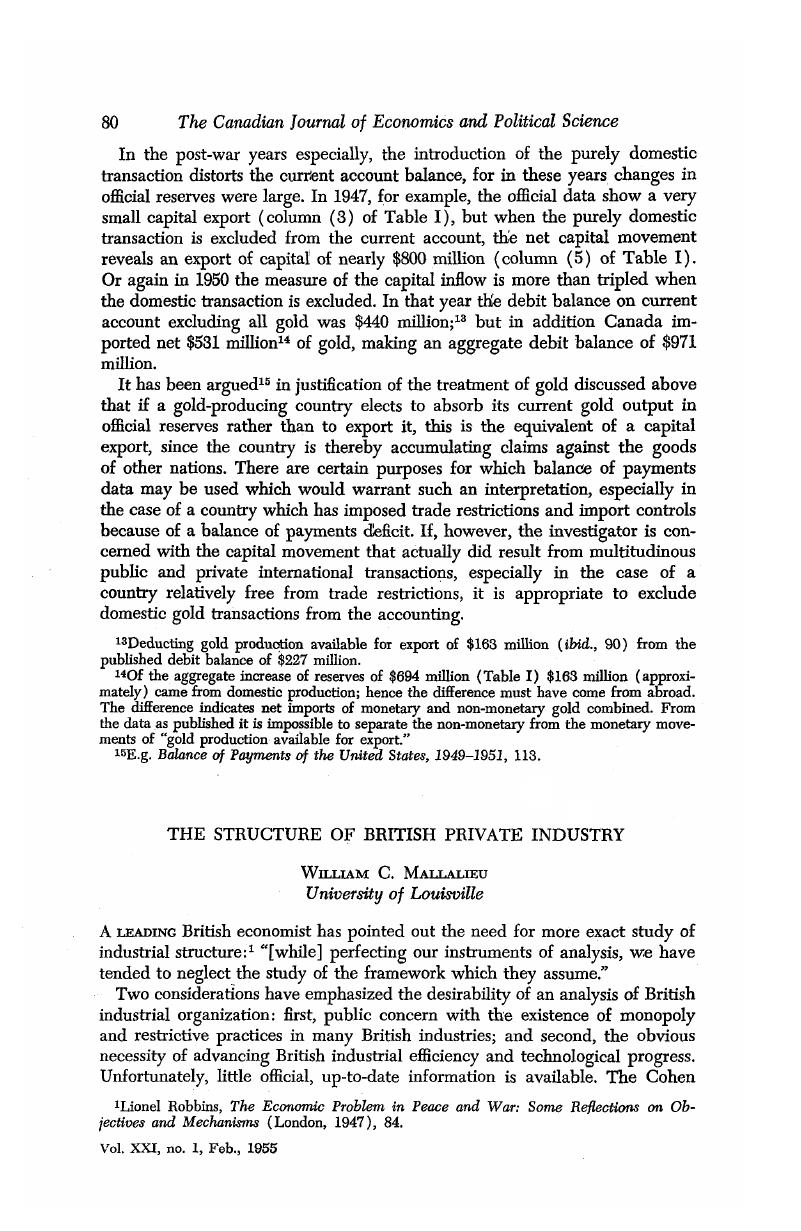Published online by Cambridge University Press: 07 November 2014

1 Robbins, Lionel, The Economic Problem in Peace and War: Some Reflections on Objectives and Mechanisms (London, 1947), 84.Google Scholar
2 Report of the Committee on Company Law Amendment, June, 1945 (Cmd. 6659).
3 The only comprehensive survey of industrial “government” is given by Florence, P. Sargant in his Logic of British and American Industry (London, 1953), 136–219.Google Scholar His British data are derived mostly from the census of 1935.
4 Basic data on companies are given in the annual Companies General Report of the Board of Trade.
5 Cf. Florence, , Logic of British and American Industry, 302–4.Google Scholar
6 Ord, L. C., Industrial Facts and Fallacies (London, 1949)Google Scholar, defends the efficiency of British industry, although critical of its cartellism.
7 By including group holdings, Florence finds dominant ownership interest in 58 per cent of these companies. His conclusions are tentative, with a considerable number of marginal cases undetermined (Logic of British and American Industry, 201–3).
8 Parkinson, Hargreaves, The Ownership of Industry (London, 1951), passim.Google Scholar
9 Report of the Committee on Company Law Amendment, 76–7.
10 Florence, P. S. in Economic Journal, LXI, 06, 1951, 400–2.CrossRefGoogle Scholar
11 Miller, Justice in In re Brazilian Rubber Plantation Estates, Ltd., (1911) 1 Law Reports Chancery Division 425.Google Scholar
12 Samuels, Horace B., The Shareholders’ Money (London, 1933), passim.Google Scholar
13 Florence, P. S., “The Statistical Analysis of Joint-Stock Company Control,” Royal Statistical Society Journal, CX, 157 ff.Google Scholar
14 Oct. 7, 1944, 469.
15 Further safeguards for stockholders are suggested by Parkinson, The Ownership of Industry, and by Albu, A. and Hewitt, A., The Anatomy of Private Industry, Fabian Research Series, no. 145 (London, 1951), passim.Google Scholar
16 The (somewhat fictitious) American concept of division of power is outlined by Copeland, M. T. and Towe, A. R., The Board of Directors and Business Administration (Cambridge, Mass., 1947).Google Scholar
17 Copeman, G. H., “The Story behind 1000 Directors: Part II,” in Secretaries' Chronicle (London), XXVIII, no. 7, 07, 1952, 254–5.Google Scholar
18 Florence, , Logic of British and American Industry, 128–9.Google Scholar
19 Arnold, J. C., The Companies Act, 1948(London, 1948), 33–52.Google Scholar
20 Vandyk, Neville D., “Economic Aspects of Company Law Reform, 1908–1948” (MS. Ph.D. thesis, Faculty of Economics, University of London, 1950, 174 ff.).Google Scholar
21 Ibid., 174.
22 Copeman, , “The Story Behind 1000 Directors: Part I,” Secretaries' Chronicle, XXVIII, no. 6, 06, 1952, 216–17.Google Scholar
23 Taussig, F. W. and Joslyn, C. S., American Business Leaders (New York, 1932).Google Scholar
24 Seventeen per cent are unclassifiable, i.e., retired, deceased, or not stated ( Copeman, , “The Story behind 1000 Directors: Part II,” 252–4Google Scholar).
25 Copeman, , “The Story behind 1000 Directors: Part I,” 215.Google Scholar
26 Professor Florence believes that traditional upper-class education deters the best men from entering business, but admits that conditions are changing (Logic of British and American Industry, 324–34).
27 See Ministry of Education reports, Education for Management (1947)Google Scholar, Education for Commerce (1949); also Anglo-American Council on Productivity, Universities and Industry (1951).Google Scholar
28 Taussig and Joslyn, Business Leaders; Copeman, , “The Story behind 1000 Directors: Part III,” Secretaries' Chronicle, XXVIII, no. 8, 08, 1952, 300–2.Google Scholar
29 See discussion of Professor Florence's paper by Lord Woolton and other members of the Royal Statistical Society in their Journal, CXI, 19 ff.Google Scholar, and Florence, , Logic of British and American Industry, 309–15.Google Scholar
30 Florence, , Logic of British and American Industry, 48–97.Google Scholar